AMERICAN ENERGY LEADERSHIP
HVDC SUPERGRID: High Voltage Direct Current
Connect renewable energy sources to where it is needed most.
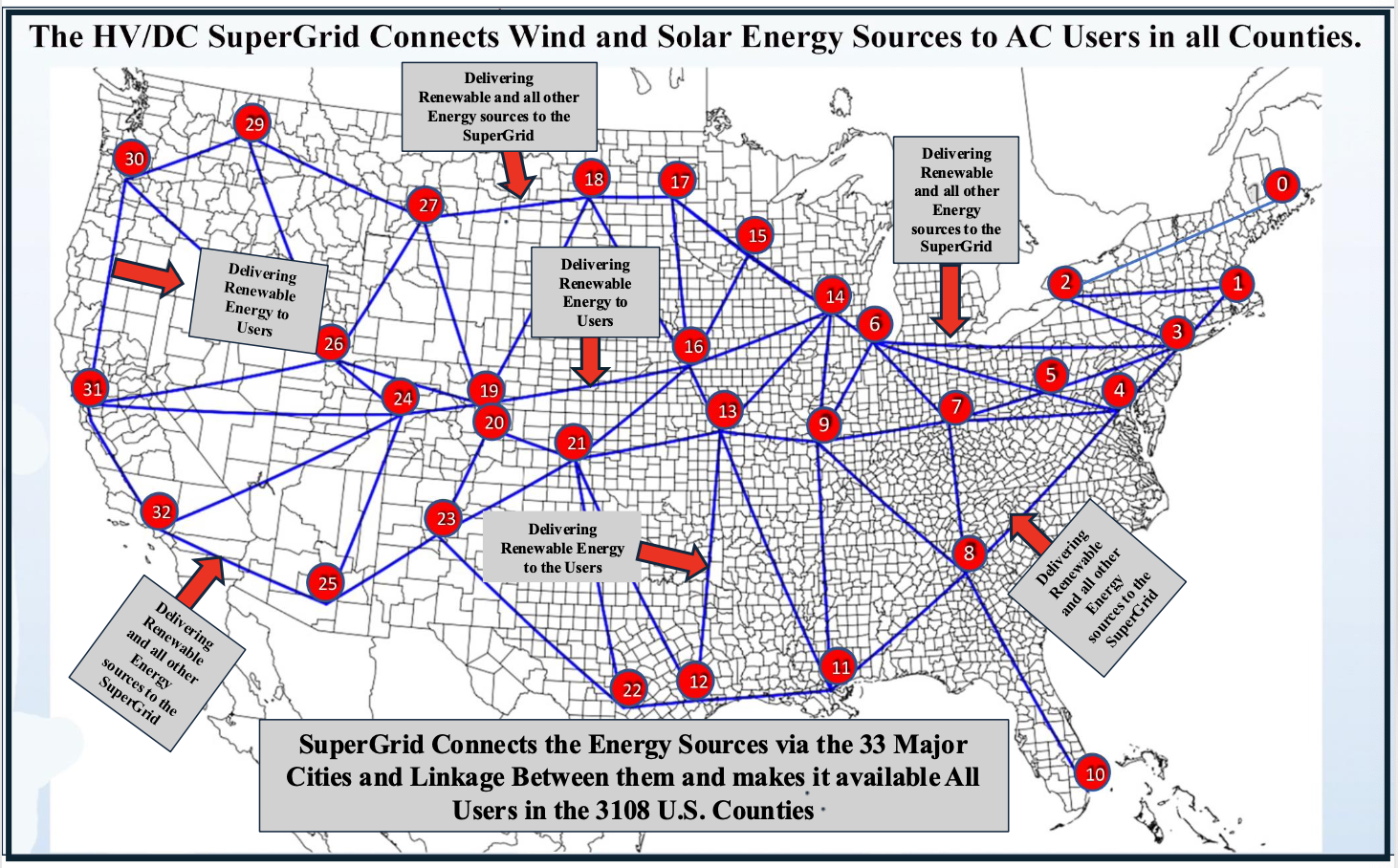
SUMMARY
The North American Underground Transmission SuperGrid, (noted hereafter as SuperGrid) is a proposed network of underground high-voltage direct current (HVDC) power lines spanning the U.S. This kind of grid would allow electricity to be transmitted efficiently across long distances, helping to connect renewable energy sources—like wind and solar farms—to areas where energy is needed most.
Experts in fields such as renewable energy and national security have reviewed the SuperGrid idea and see it as promising. The goal is to create a network that supports the transition to cleaner energy, boosts economic growth, and protects the environment.
The proposal for a North American Underground Transmission SuperGrid is essentially about building a nationwide underground electricity network. This network would carry electricity generated by renewable sources (like wind, solar, and hydro) across the country efficiently and reliably.
Projections indicate that ultimately a full zero carbon electric economy must supply and carry more than double as much electricity as the grid carries today, with all of it generated by renewables, nuclear, hydro, and geothermal. This will take transformative steps rather than the limited patches presently envisioned by the Department of Energy (DOE).
Why Do We Need It?
To achieve resilience, grow the economy and bolster national security we need to power everything with clean energy, including natural gas through a highly effecient transmission infrastructure. Additionally, the current U.S. electricity grid isn’t built to handle future demand.
What’s the SuperGrid?
The SuperGrid would be a new, high-capacity transmission system running mostly underground, following existing railroad and public routes. It would use high-voltage direct current (HVDC) cables to quickly and efficiently move electricity from where it’s produced to where it’s needed.
How Will It Help?
Cost Savings: Renewable energy, especially from sunny or windy areas, can be much cheaper than fossil fuels. The SuperGrid would make it easier to place wind and solar farms in ideal locations, reducing costs and emissions.
Energy Storage and Reliability: By linking renewable energy sources like wind and solar across a larger area, the SuperGrid could balance supply and demand better, cutting the need for costly, large-scale energy storage.
Job Creation and Economic Growth: Building and operating the SuperGrid would create jobs, support economic development, and provide affordable clean energy across the country, especially in rural areas.
Improved Security and Resilience: Placing HVDC cables underground would protect the network from extreme weather, cyber-attacks, and reduce the risk of wildfire ignitions from overhead lines.
Why Now?
Current grid limitations are holding back renewable energy projects. If the U.S. doesn’t improve its transmission network, the nation would struggle to meet growing energy demands. Major leaders are emphasizing the urgency of expanding grid capacity.
What Needs to Happen?
Ongoing high-level government support is essential. A public-private partnership led by the federal government could coordinate investment, set policies, and create incentives to bring together the right stakeholders. The SuperGrid would be faster to build and less complicated legally because it would use existing rights-of-way along railroads, avoiding long, drawn-out battles for new land.
The SuperGrid would also strengthen the U.S. economy by lowering energy costs and making American businesses more competitive internationally. This step toward a more sustainable, secure energy system would ensure the country’s leadership in renewable energy, aligning with similar moves in countries like Canada, which is also planning a national clean energy grid.
Utility-Scale Photovoltaic and Onshore Wind Technical Potential
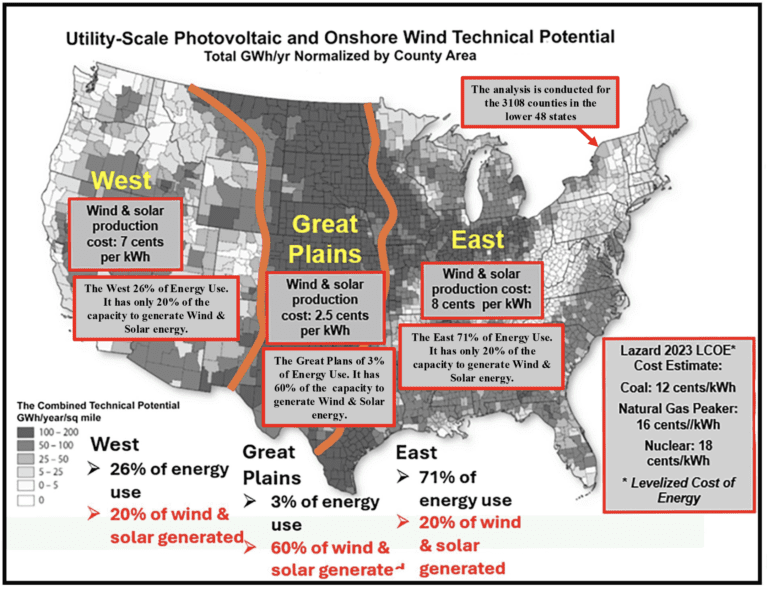
The SuperGrid-Wind-Solar-Gas System 2050
Alexander E. MacDonald, PhD
Article by Alexander E. MacDonald, PhD

AREDAY IMPACT 2023: HVDC Panel
The SuperGrid Working Group
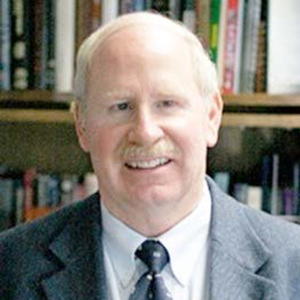
Alexander (Sandy) MacDonald, Director
Alexander MacDonald is an author and speaker who has devoted the last 20 years of his career to finding worldwide solutions to the climate crisis. He retired after 42 years in the National Oceanic and Atmosphere Administration (NOAA).
He is the founding Director of the Global System Laboratory of the NOAA’s Earth System Research Laboratory (ESRL) in Boulder, Colorado. From 2005 to 2016 he was the Director of ESRL, a world leader in weather and climate research. In the 1980s and 1990s he led a team of NOAA scientists and engineers to develop two operational prototypes for NOAA’s National Weather Service: a system that combined advanced weather information for NWS offices (still a mainstay of NWS offices) and a system that allowed thousands of computers to work together on weather model predictions. The first in the world, it is now a central system of all global weather prediction centers.
Working with Vice President Gore in 1994, he initiated a program called GLOBE, collecting environmental observations from school children worldwide. The program still operates with over 200,000 students in 127 nations. He also invented an educational display called Science On a Sphere, currently in over 200 museums worldwide and seen by over 50 million people/year. By the late 2020s, it will have educated over a billion people about planet Earth.
He led a research project at NOAA to determine the infrastructure for wind and solar energy systems to replace nearly 100% of fossil fuels globally. It led to a celebrated journal article rated in the 99th percentile of all NATURE magazine publications in 2016.
He has recently completed a book that presents the urgency of worldwide cessation of carbon dioxide emissions using advanced electricity grid transmission: an HVDC US SuperGrid-Wind-Solar-Gas Energy System (decarbonized gas). The goal is to bring human emissions to net-zero by 2050.
Dr. MacDonald’s PhD is from the University of Utah.
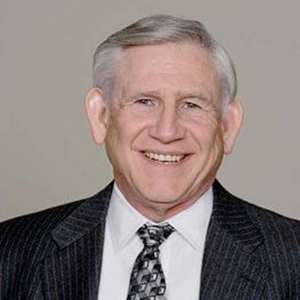
Charles Bayless
Charles Bayless is a retired Utility Executive and University President. Until June 30, 2008, Mr. Bayless was President and Provost of the West Virginia University Institute of Technology, a West Virginia University divisional campus.
Before Dec 27, 1999, Mr. Bayless was Chairman, President, and Chief Executive Officer at Illinois Power Company. Before joining Illinova Corporation in June 1998, Mr. Bayless was Chairman, President, and Chief Executive Officer of Tucson Electric Power Company. From 1981 to 1989, Mr. Bayless was Senior Vice President and Chief Financial Officer of the Public Service Company of New Hampshire, guiding the company through the first bankruptcy of a large utility. Before that, he was employed by Consumers Power Company in Jackson, Michigan, first as an attorney, then as the Director of Nuclear Fuel Supply, and finally as the Director of Special Corporate Projects. In College, Mr. Bayless had summer jobs in line construction and at power plants at Kentucky Power and Pennsylvania Power and Light.
Mr. Bayless received his BSEE from the West Virginia Institute of Technology in 1968. In 1971, he earned his MSEE in power engineering and, in 1972, his Law Degree, both from West Virginia University. He earned his MBA in 1977 from the Graduate School of Business Administration at the University of Michigan.
Mr. Bayless is a board member of West Virginia American Water, the Climate Institute, and TS Conductors and the Advisory Boards of E Source, Pi Energy, Energy Impact Partners, and the Angeleno Group. He is currently a judge for Platt’s Global Energy Awards and a frequent speaker on the future of energy.
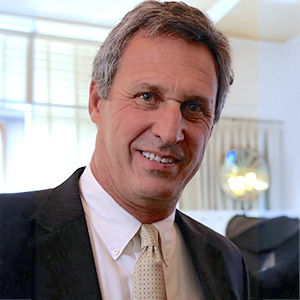
Chip Comins, Chairman
Chip Comins is a renewable energy and clean technology expert and serves as Founder, Chairman and CEO of the American Renewable Energy Institute (AREI) and is the Founder of AREDAY. He is President and CEO of American Spirit Productions and Managing Director of WEnergy. Mr. Comins focuses on and connects climate solutions in a Climate Constellation of implementation, acceleration, and replication locally, nationally, and globally. In 2009, he produced 13 official side events at the UNFCCC COP 15 in Copenhagen, Denmark, and presented at COP 16 in Cancun, Mexico, in 2011; COP21 in Paris, France, in 2015 & COP22 in Marrakech, Morocco, in 2016. Mr. Comins has produced and directed both long and short-form documentary films for educational and broadcast television markets, including PBS, Link TV, BET and Discovery Network, the National Renewable Energy Laboratory, and DOE Wind Powering America.
A long-time advocate of developing and implementing renewable energy resources to abate greenhouse gases and climate change, Mr. Comins encourages a business approach to solving both the economic and environmental crisis. Mr. Comins completed the 16th Annual AREDAY 2019 Summit in Aspen/Snowmass, CO, featuring over 175 globally renowned thought leaders in clean energy and sustainable solutions. In 2020, he hosted the AREDAY “Democracy and the Vote” virtual series and continues to advocate for rapid climate solutions.
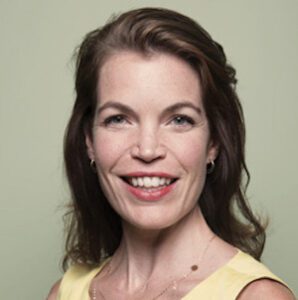
Allie Kelly
Allie Kelly is Executive Director of The Ray. In that role, she leads the nonprofit organization that has built the nation’s only publicly accessible, living laboratory for transportation innovation.
Allie was recruited to lead as its first Executive Director in 2015. In three years, she has helped the organization to implement and build almost a dozen ground-breaking, world-leading technology demonstrations, including the first solar road in the United States and the world’s first public demonstration of a drive-through tire safety station. She is also a frequent public speaker and delivered keynote remarks about The Ray from the main stage at transportation, environmental, and technology industry conferences around the world including the U.S Transportation Research Board, AASHTO, VERGE, the Federal Reserve Bank of Atlanta, AREDAY and, in 2019, TedX Atlanta, WTS and MOVE. She was the recipient of the 2018 Atlanta Technology Professionals (ATP) Impact Award and was listed as one of the 100 Women to Know by Engineering Georgia in 2018 and 2019.
A Georgia native, Allie earned a B.A. in political science from the University of Georgia. She has over 15 years of experience working in public policy, first as a lobbyist for UPS in Washington, D.C., then returning to Atlanta and founding Georgia Watch, the state’s only consumer watchdog organization.
In 2009, she joined former Lt. Gov. Pierre Howard at the Georgia Conservancy as its senior vice president. Allie and the Trustees of the Ray C. Anderson Foundation partnered with Georgia Tech and the Georgia Conservancy on a “net zero highway” feasibility study for the project that would become The Ray.
Allie lives in Serenbe, near The Ray, with her husband Giff and twin sons Wyatt and Gifford.
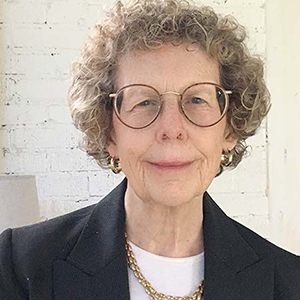
Deborah Stirling
Deborah Stirling is with the Burroughs and Chapin Center forMarine and Wetland Studies at Coastal Carolina University in South Carolina. Among her activities, she helps coordinate the Southeast Atlantic Econet program (SEA Econet), which is the National Weather Service’s presence in the Southeast for the National Mesonet Program. Ms. Stirling was a founder and CFO of Infinite Habitat @ Innovista, an engineering design and sustainability company that offered consulting, particularly in renewable energy and other aspects of the built environment. Ms. Stirling is a retired SC attorney specializing in science, engineering, technology, environment, and climate research. In addition, she was a legislative advisor to the National Academy of Sciences. Ms. Stirling spent ten years as Subcommittee Counsel for Oceans and Atmosphere for the U.S. Senate Committee on Commerce, Science, and Transportation and then was Legal Counsel for the University Corporation for Atmospheric Research (UCAR), which manages the National Center for Atmospheric Research in Boulder, CO.
Ms Stirling is past chair and serves on the National Sea Grant Advisory Board (National Oceanic and Atmospheric Administration/Department of Commerce), works with various scientific groups around the country on climate-related projects and serves as a Commissioner on the South Carolina Floodwater Commission. Ms. Stirling has a J.D. from the University of South Carolina School of Law.
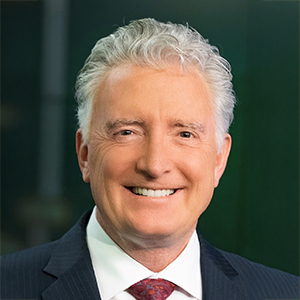
Mike Nelson
Mike Nelson earned his degree in Meteorology from the University of Wisconsin, Madison, launching a career in weather broadcasting that spanned nearly five decades. His journey began in 1976 at WKOW-TV and Weather Central in Madison, Wisconsin. Over the years, Mike’s dedication and expertise earned him widespread recognition, including 20 Emmy awards for outstanding television weather broadcasting.
Serving as Chief Meteorologist for Denver7 from 2004 to 2024, Mike became a trusted voice in Colorado weather. Before his time at Denver7, he held the same role at KUSA-TV from 1991 to 2004 and at KMOV-TV in St. Louis from 1985 to 1991. His commitment to the community went beyond the studio, earning him the title of “Citizen of the Year” from the Colorado Broadcasters Association in 2001 for his extensive volunteer work in schools across the state.
Mike’s passion for education is evident through his engagements with over one million students, numerous clubs, and service organizations. His signature “Tornado Dance” became a beloved and eagerly anticipated part of his school presentations. In recognition of his enduring impact on Colorado broadcasting, he was inducted into the Silver Circle in 2016, celebrating 25 years of excellence and community service.
A prolific author, Mike has written two books on Colorado’s dynamic weather: Colorado Weather and Colorado Almanac. Additionally, he co-authored The World’s Littlest Book on Climate: 10 Facts in 10 Minutes with Dr. Pieter Tans and Michael Banks, now in its second edition.
In 2019, Mike achieved the prestigious honor of becoming a Fellow of the American Meteorological Society (AMS), marking him as the only Colorado TV meteorologist to receive this recognition. Further cementing his legacy, he was inducted into the Denver Press Club Hall of Fame in October 2023 — the first and only meteorologist to be so honored.
On December 12, 2024, Mike officially retired from television to pursue new ventures in renewable energy and climate change advocacy. He now devotes his time to making a lasting impact on environmental issues. Mike and his wife, Cindy, remain rooted in Colorado, enjoying time with their two grown children and three grandchildren, all of whom live nearby.
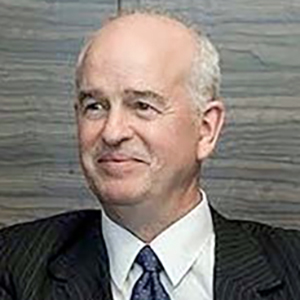
Gary Dirks
Gary Dirks is the senior director of the Global Futures Laboratory and Director of LightWorks®, an Arizona State University (ASU) initiative focusing on solar energy and light-inspired research. From 2013 to 2019, Dr. Dirks directed ASU’s Wrigley Institute and holds the Julie Wrigley Chair of Sustainable Practices, serves as a professor of practice in the School of Sustainability, and is a distinguished sustainability scientist. Before joining ASU, Dr Dirks was the president of BP Asia-Pacific and BP China, where he expanded BP’s operations from fewer than 30 employees to over 1,300, with revenues reaching about $4 billion in 2008.
Dr. Dirks has received numerous honors, including China’s “Friendship Award” in 2003, an honorary Companion of the Order of St. Michael and St. George from the UK in 2005, recognition as one of the most influential multinational company leaders in China by the People’s Daily in 2008, and the CLAS Leaders Award from ASU in 1999 for his leadership skills.
Dr. Dirks earned a Ph.D. in chemistry from ASU in 1980 and was the first doctoral student at the Center for the Study of Early Events in Photosynthesis, now the Center for Bioenergy and Photosynthesis.
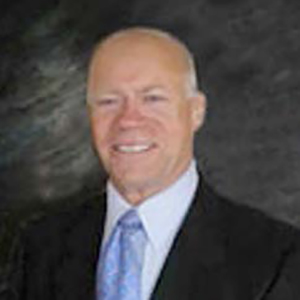
Andrew L. Quiat
Andrew Quiat first acted on environmental matters while a Ford Foundation Environmental Intern in a multi-year internship while a law student. He has had a full career in private practice, business, and on non-profit boards since he was 25 years old, with experience in executive positions, board governance, for-profit public, private, and non-profit\ organizations, as well as engaging in the private practice of law. His law practice is substantially limited to realization upon large money judgments, pursuing people who send robocalls, setting aside fraudulent conveyances, and in civil racketeering cases. He has been actively involved through outreach efforts of the Aspen Community United Methodist Church, of which his wife, an Iliff alum, was the Pastor, with the provision of sustainable water to rural Kenyans.
He is a Trustee of the American Renewable Energy Institute, of Aspen, Colorado (www.areday.net) and has served as its Secretary for a number of years, and continues to do so. He has been instrumental in formation of the Iliff School of Theology’s Eco- Justice Center, while serving as one of its Trustees when it doubled its endowment, solved massive deferred maintenance issues, and dealt with deeply buried institutional racism.
He has been a Director of a public company involving technological approaches to document and product security (Optical Security Group).
He was Chairman and General Counsel of Beth Israel Hospital and Geriatric Center, effecting both a corporate re-structuring and a multi-million dollar turn-round in economic performance without firing anyone.
He spent seven years on the Colorado Health Facilities Finance Authority, during which time the authority financed in excess of $1.6 billion of double-tax-exempt bonds to finance non-profit health facilities in Colorado. Through that affiliation he served on the Operations Committee of the National Council of Health Facilities Finance Authorities and chaired its Capital Finance Policy Committee.
He has served on the Colorado Supreme Court’s County Court Rules sub-committee where all changes to post-judgment Rules originate. He serves on the Board of the Colorado Creditors Bar Association.
He chaired the Young Lawyers Section of the Colorado Bar Association, served on the Board of Trustees of the Denver Bar Association, the Board of Governors of the Colorado Bar Association, and on the Executive Council of the Young Lawyers Section of the American Bar Association at a time when that section first came to represent over 1/2 of the Association’s membership.
He is an experienced litigator in both federal and state courts and has transactional experience including mergers and acquisitions.
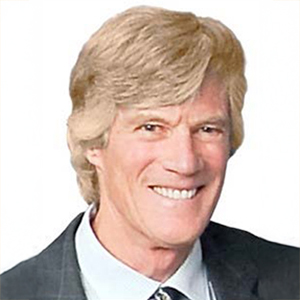
John “Spike” Buckley
Spike Buckley is the Principal of Grimley Capital, and has four decades of experience as an early-stage investor and commercial real estate owner and developer of multifamily, retail, and office properties, with current and past projects across the U.S. and Canada. In conjunction with his real estate activities, he is committed to mobilizing supporters and activating investors to tackle the climate crisis.
Mr. Buckley founded Earth’s Call Fund in May 2019 and, in the same year, was honored with the Earth Legacy Leadership Award from the American Renewable Energy Day Summit (AREDay). In 2021, he co-founded One Earth Philanthropy and served as a member of its Board of Directors until 2023.
Mr. Buckley is currently a member of the Board of Directors of the Global Warming Mitigation Project, the Climate Democracy Initiative, PharmaJet, Inc. and Cryptomill Technologies. He is also a member of the Advisory Board of the Grace Gorilla Rehabilitation and Education Center. He is an avid supporter and funder of Conservation Colorado, the League of Conservation Voters, the Sierra Club, Greenpeace, NextGen America, and the Denver Dumb Friends League, among others.
Mr. Buckley is a graduate of The Episcopal Academy, a member of its Board of Trustees, and a graduate of the University of Colorado at Boulder with a bachelor’s degree in economics.
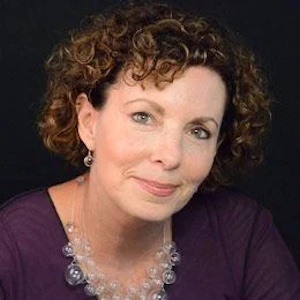
Roberta Baskin
Roberta Baskin spent more than 30 years as an awarding-winning investigative reporter at CBS News, ABC News, & PBS for “NOW With Bill Moyers” exposing stories of injustices. Roberta’s storied career garnered more than 75 journalism awards, including three duPont Columbia Awards, two Peabody Awards, and more than a dozen Emmys.
Her investigations reformed injustices and improved dozens of health and safety products and practices. She now serves on a number of non-profit boards dedicated to climate justice and solutions to socio-economic divides.
Nine years ago Roberta shifted her mission to find companies and tell stories about exemplary businesses helping to achieve the UN’s Sustainable Development Goals.
She co-founded and launched AIM2Flourish.com at Case Western Reserve University. It now showcases more than 5,200 Global Goals stories written by business school students in more than 100 countries. Roberta served as key fundraiser, strategist, and global education promoter. Real Leaders Magazine honored her among its “100 Visionary Leaders.”
At the heart of the Global Goals is Goal #13: Climate Action, which led to Roberta’s current service on the Board of Directors of the Climate Democracy Initiative and the Global Warming Mitigation Project, which annually presents the Carbon Curve Prize. The prize helps discover the world’s most innovative and effective climate solutions and has catalyzed exponential growth for countless climate projects and programs.
Roberta’s coverage of COP9 in Milan in 2003 for the PBS program “NOW With Bill Moyers” galvanized her commitment to explore climate justice issues.
Roberta also serves on the founding boards of The Peace Studio, supporting strengths-based media-making in the arts and journalism. In addition she’s a founding board member of FoolProof, a free platform teaching financial literacy, used by 90,000 middle and high school students nationwide and the recipient of Jumpstart Coalition’s 2024 national “Innovation Award.” Roberta was honored with a Nieman Fellowship at Harvard University and named an Ethics Fellow at the Poynter Institute. She served as The Center for Public Integrity’s executive director, and on the Fund for Investigative Journalism’s board for 13 years. She continues to serve on the Robert F. Kennedy Memorial Journalism Committee.
She has traveled the world as a guest lecturer from Baku to Budapest, and from Bilbao to Borneo. She lives with her retired journalist husband, Jim Trengrove, in a former CIA safe house overlooking a lake in Virginia.
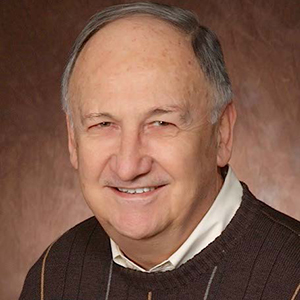
Mike MacCracken
Michael MacCracken: Retired in 2002 after 34 years with the Department of Energy’s Lawrence Livermore National Laboratory (LLNL), Dr. MacCracken volunteers as Chief Scientist for Climate Change Programs with the Climate Institute (a non-partisan organization catalyzing solutions for adaptation, mitigation, and climate stabilization [climate.org]), and serves on the steering committee of the Healthy Planet Action Coalition.
Dr. MacCracken’s 25-year research activities at LLNL used numerical models to evaluate an array of factors that could affect the climate. During this period, he also served as an advisor to DOE’s climate research program and as US co-chair (1984-90) of the US/USSR WG VIII on climate change.
From 1993-2002, he was on assignment from LLNL as senior global change scientist with the U.S. Global Change Research Program (USGCRP), was the office’s first executive director (1993-1997) and served as executive director of USGCRP’s National Assessment Coordination Office (NACO) (1997-2002). NACO coordinated the activities of regional and sectoral teams and collaborated with the federal advisory committee in preparing the nation’s first climate change impacts assessment. Dr. MacCracken also contributed to the preparation of IPCC assessments and official reviews of their science and impact volumes.
Dr. MacCracken was a member of the first Arctic Climate Impact Assessment team (2002-04), president of the International Association of Meteorology and Atmospheric Sciences (IAMAS 2003-2007), on the executive committee of the Scientific Committee for Oceanic Research (SCOR 2003-2011), and prepared multiple legal declarations seeking to limit climate change, one of which was favorably cited in 2007 in the Supreme Court majority opinion, Massachusetts v. EPA.
Dr. MacCracken also serves as treasurer/environmental scientist for Oceana Energy Company, a private entity with a unique turbine design for extracting energy from rivers, tides, and ocean currents.
Dr. MacCracken has a B.S. in Engineering (Princeton University 1964) and Ph.D. in Applied Science (University of California Davis/Livermore 1968).
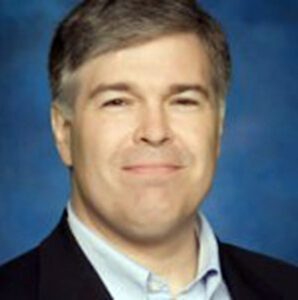
Thomas King
Thomas King is currently Managing Partner of CrossRiver Capital and was a Founding Partner of US Renewables Group, the first private equity group focused solely on renewable power, bio-fuels/chemicals, and related infrastructure. With more than thirty years’ experience in finance and energy, King has completed more than $25 billion of equity and debt investments across six continents acting both in a proprietary capacity and for many of the world’s most prominent energy and infrastructure companies. He has provided path-finding leadership in structured debt financings leading to solar energy ABS and was an early investor and proponent of PACE financing. Before USRG, he was with Dresdner Kleinwort Wasserstein, and prior to that worked for over a decade with JP Morgan Chase in London and New York.
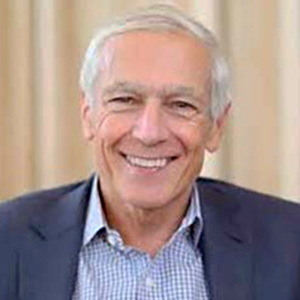
General Wes Clark
Wes Clark is a businessman, educator, writer, and commentator who is the Chairman and CEO of Wesley K. Clark & Associates, a strategic consulting firm. He is the Chairman and Founder of Enverra, Inc., a licensed investment bank, and Chairman of Energy Security Partners, LLC, as well as numerous corporate boards, including BNK Petroleum and Leagold Mining. General Clark is active in energy, including oil and gas, biofuels, electric power and batteries, finance, and security.
During his business career, General Clark has served as an advisor, consultant, or board member of over ninety private and publicly traded companies. In the not-forprofit space, he is a Senior Fellow at UCLA’s Burkle Center for International Relations, Director of the Atlantic Council, and Founding Chair of City Year Little Rock/North Little Rock.
A best-selling author, General Clark has written four books and is a frequent contributor to TV and newspapers.
General Clark retired as a four star general after 38 years in the United States Army, having served in his last assignments as Commander of US Southern Command and then as Commander of US European Command/ Supreme Allied Commander, Europe.
While serving in Vietnam, he commanded an infantry company in combat, where he was severely wounded and evacuated home on a stretcher. He later commanded at the battalion, brigade and division level, and served in a number of significant staff positions, including service as the Director, Strategic Plans and Policy (J-5). He was the principal author of both the US National Military Strategy and Joint Vision 2010, prescribing US warfighting for full-spectrum dominance.
He also worked with Ambassador Richard Holbrooke in the Dayton Peace Process, where he helped write and negotiate significant portions of the 1995 Dayton Peace Agreement. In his final assignment as Supreme Allied Commander Europe he led NATO forces to victory in Operation Allied Force, a 78-day air campaign, backed by ground invasion planning and a diplomatic process, saving 1.5 million Albanians from ethnic cleansing.
General Clark’s awards include the Presidential Medal of Freedom, Defense Distinguished Service Medal (five awards), Silver star, bronze star, purple heart, honorary knighthoods from the British and Dutch governments, and numerous other awards from other governments, including award of Commander of the Legion of Honor (France). He has also been awarded the Department of State Distinguished Service Award and numerous honorary doctorates and civilian honors.
General Clark graduated first in his class at West Point and completed degrees in Philosophy, Politics and Economics at Oxford University (B.A. and M.A.) as a Rhodes scholar.
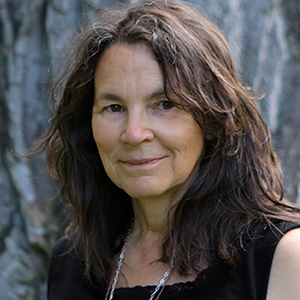
Lisa Gerstner
Lisa Gerstner is a visual storyteller whose work spans film production, writing, music composition, and fine arts. She holds a Master of Science in Education Media Design and Technology from Full Sail University and a Bachelor of Fine Arts in Painting from Kansas State University. Lisa is known for her documentary on the celebrated Crow artist Earl Biss, Art of Native America: Earl Biss, which has won international awards and explores Biss’ profound impact on contemporary Native American art.
Notable projects include co-producing and composing music for Girls on Purpose, co-producing the feature Openings: The Search for Harry and producing/directing a video series on sculptor, Gib Singleton. As an author, she’s best known for Experiences with Earl Biss: The Spirit Who Walks Among His People, an international award-winning biography that delves into Biss’ life, art, and influence.
Her background in art education, graphic design and fine art enhanced by expertise in instructional design and current learning theories, positions her as a storyteller skilled in understanding how people learn and perceive new ideas. This interdisciplinary approach informs her work with clients across business, non-profits, education, and entertainment, where she excels at translating complex messages into impactful visual and auditory experiences that resonate deeply with target audiences.
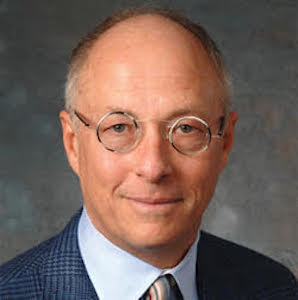
Bill Brandt
Bill Brandt is Director of Strategic Integration for ASU LightWorks and is an experienced energy executive. After a 30-year career at SOHIO/BP he retired as Director of Mergers and Acquisitions and joined Arizona State University to work on renewable energy challenges. As Director of Strategic Integration of ASU LightWorks for Arizona State University’s incubator and accelerator for renewable energy technologies, he works across interdisciplinary research programs with national laboratories and major corporations to deliver renewable energy products.
Brandt has a B.S. in Chemistry and Environmental Sciences from Principia College and an MBA from Wharton; he is on the board of a social networking communications company (educatedchange.com) and Ensyn Corporation, a producer of renewable liquid fuels from wood biomass and agricultural residues.
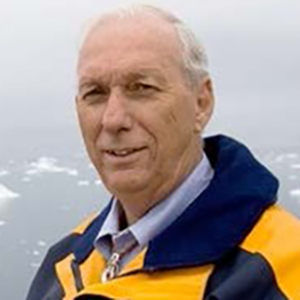
In Memoriam – Robert (Bob) Corell (1934-2025)
AREI honors the late Bob Corell (Robert W. Corell), former Chairman and HVDC SuperGrid Working Group lead.
Bob was a renowned American climate scientist and policy expert, recognized for his significant contributions to understanding global climate change and its impacts, particularly in the Arctic. He worked extensively on issues related to the environment, climate science, and the intersection of science and policy.
Here are some highlights of his career:
Leadership in Climate Research: Corell served as the chair of the Arctic Climate Impact Assessment (ACIA), a groundbreaking report that highlighted the effects of climate change in the Arctic and its implications for the rest of the world. The ACIA was one of the first comprehensive studies to document the rapid warming of the Arctic region.
Academic and Policy Roles: He has held positions at various academic and policy institutions, including the Harvard Kennedy School, the University of Miami and UiT The Arctic University of Norway. His work often bridged the gap between scientific research and policymaking.
Affiliation with International Organizations: Corell has been involved with the United Nations and other international organizations, focusing on climate-related issues, sustainability, and the role of science in addressing global challenges.
As a Director and Principal at the Global Environment & Technology Foundation, he is focused on programs and activities that explicitly addressed those human-induced changes that are disruptive, and which are leading to transformations across both public and private spheres of societies. Dr. Corell is dedicated to frame these programs in ways that are increasingly formulated to accelerate positive social outcomes, to expand knowledge for all, facilitate technological innovation and foster institutional cultures that are dedicated to the benefit of society.
Advocacy and Communication: A prominent advocate for addressing climate change, Corell has worked to raise awareness of its risks and promote global action. He has been a sought-after speaker at conferences and in the media.
Bob Corell’s contributions have been critical in shaping how scientists, policymakers, and the public understand and respond to climate change, particularly the pressing issues facing the Arctic region.
He influenced and touched many people over the years and the world has lost a great man. His energy and ideas where infectious and those of us who were lucky enough to know him know we have a responsibility to carry on his work.
Bob held Ph.D., M.S., and B.S. degrees from Case Western Reserve University and MIT. He was the Assistant Director of the National Science Foundation for Geosciences, responsible for the Atmospheric, Earth and Ocean Sciences and Polar Programs. He led the U.S. climate and global change research program and international programs for the UN, global and regional research science and related public policy assessments. He has been and continues to be recognized with international awards, Honorary Doctor Degrees, and other recognitions.
Stay in Touch
Sign up for regular updates on renewable energy and exclusive events. Unsubscribe anytime.
AREI Inc. | PO Box 7784, Aspen CO, 81612 | Tel. 970.948.9929 | info@areday.net
AREI, Inc. is a registered non-profit under section 501(c)(3) of the Internal Revenue Code. EIN # 27-5216186
Copyright 2024 AREI. All Rights Reserved
